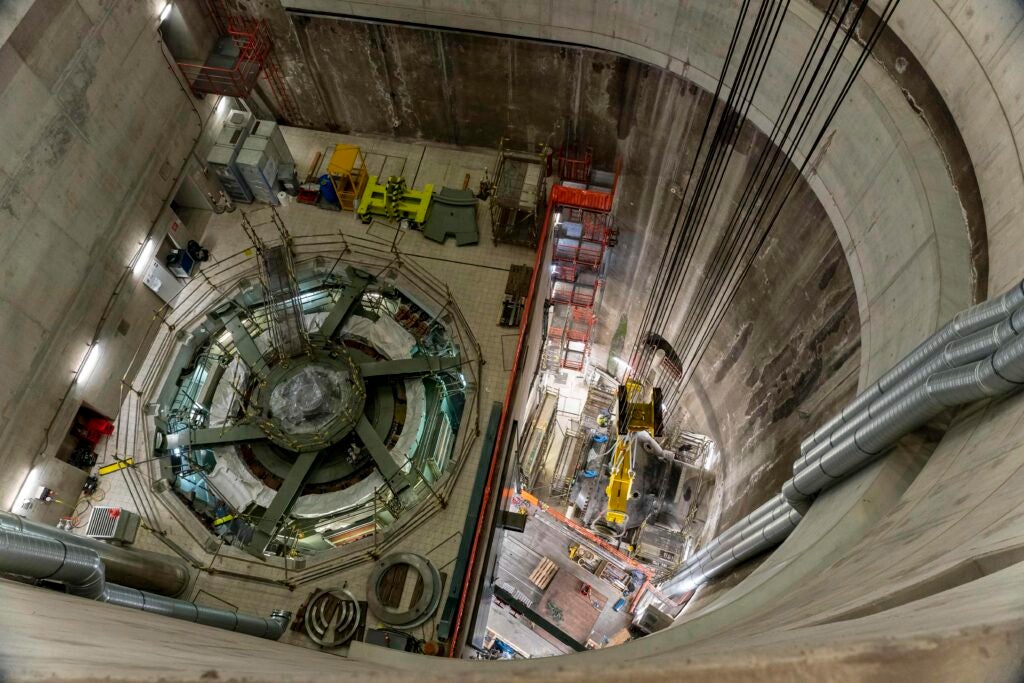
The world’s climate crisis is growing increasingly dire, but simply turning off the taps on fossil fuels would be as abrupt as it would be ultimately unhelpful. Actors across the sector, from large-scale power companies to small-scale technological innovators, are refining and fine-tuning their operations, to minimise environmental damage where they can, and try to balance the world’s crumbling climate with humanity’s need for power.
This balancing act is apparent in Wales, not often considered a flashpoint of power industry innovation, but a region that is slowly improving its environmental efficiency. Between 2012 and 2019, Wales reduced its reliance on coal power by one-third, leaving coal responsible for just 2% of the national energy mix in 2019. In the same year, the renewable share of Wales’ total electricity generation hit 27%, up two percentage points from the previous year.

Discover B2B Marketing That Performs
Combine business intelligence and editorial excellence to reach engaged professionals across 36 leading media platforms.
In addition to this progress, Welsh power has benefitted from technological support from some of the industry’s biggest players. This is most obvious at the Snowdonia National Park in north-west Wales, where German power firm RWE operates five hydroelectric power stations. The projects recently received backing from British telecommunications firm Inmarsat, which has brought its Elera internet of things platform to the facilities, aiming to improve communication and efficiency across the stations.
Five dams, one network
The Snowdonia stations have helped drive a decade of hydroelectric progress in Wales. Across the country, cumulative installed hydropower capacity has increased from 147MW in 2008 to 167MW in 2020, an already impressive feat considering the region lacks some of the vast natural resources that undermine large-scale hydropower.
To improve this capacity further, RWE worked with Inmarsat, and technology-as-a-service provider Ground Control, to fine-tune the efficiency of the operations. The dams now use Inmarsat’s Elera network for a range of communication roles at weather stations across Snowdonia – including the measurement of water levels, water temperature, and precipitation – and stores and transfers this data for ease of interpretation.
“We’ve been able to allow access between our teams to easily look back in time and see the data,” explains John McNab, operations and maintenance engineer at RWE UK. “They can then see the impact of any changes made.”

US Tariffs are shifting - will you react or anticipate?
Don’t let policy changes catch you off guard. Stay proactive with real-time data and expert analysis.
By GlobalData
Inmarsat is eager to tout the efficacy of the platform, noting that it is “reliable in all conditions, with 99.9% availability”, and that its data transfers and storage only require 2MB of storage space a month, helping to keep memory requirements low in a sector that is increasingly reliant on storing, moving, and analysing data.
Indeed, there is a smart element to these stations and their processes, with Inmarsat noting that they are capable of responding to changing conditions. Under ordinary circumstances, they send reports to RWE every three hours, but this frequency is increased to once every hour if water levels reach dangerous heights, providing an additional level of safety for a power source that is reliant on the stockpiling of vast water reservoirs.
Environmental challenges
Perhaps one of the most impressive accomplishments of the communications project is the fact that it can flourish in a relatively hostile environment. The environmental diversity of the region, which enables the dams to operate in the first place, offers a logistical challenge, with the RWE headquarters in Dolgarrog around 600m lower than the points at which fieldwork must be completed atop the dams.
Similarly, the Snowdonian rainfall that provides power to its reservoirs can also work against heavy industrial operations. Average annual rainfall in parts of Snowdonia can hit 3,000mm, around three times that of other parts of Wales, and the Met Office has reported that the region can see over 30 days of sleet or snow a year, again around three times that of other Welsh regions.
This combination of high rainfall and an undulating landscape means that it can be difficult to manage industrial operations, or even realise when they have been disrupted. As McNab puts it: “Decisions would be made ahead of a weather event, but unless these were being physically monitored it wouldn’t always be clear if we had a spill at a location or a reduced flow due to the changes.
“Having the information, we could look back and confirm what had been the result.”
But McNab also noted that the region has, in some ways, proved easier to operate in than might have been expected. He uses the example of Snowdonia’s national parks, and the fact that much of the land is protected yet can still host a number of renewable power projects and their supporting communications, as evidence of a more flexible approach developed by Inmarsat.
“The national park aspect was less of an issue than the actual area, with access and communication deficiencies being foremost,” McNab says. “Once any changes in flow had been carried out, then the effect would not necessarily have been observed until later on, if at all.”
Looking ahead
These principles of flexibility have helped establish Inmarsat’s communications arrays in the region, and it is this approach that could yield the most significant results in the long-term. Considering the relatively small scale of Snowdonia’s hydroelectric dams, it is unlikely the facilities themselves will be the driving force behind a worldwide shift in renewable output.
Yet Wales could still function as something of a proving ground for technological and operational experimentation, to find solutions that could work on a larger scale elsewhere.
“Any stats comparing generation before and after the hydrology stations were installed might be useful,” McNab continues, pointing to the value added by collecting and sharing this kind of data in the first place.
“No data [is present] in relation to generation – the weather stations are mostly sited on a network of waterways that flow into reservoirs with other sources – however, we are able to see at the given locations the exact information for if, for example, there had been a spill or a low level over that period.”
The facilities are also benefitting from a national government that is eager to develop its renewable power infrastructure. Wales aims for 70% of its electricity to come from renewable sources by 2030, and for 1GW of this to be locally owned, a move that would both shake up the country’s energy mix and redistribute the balance of power within the energy industry.
Perhaps most impressively, in 2019, Wales boasted over 50,000 renewable energy projects, compared to just a single coal facility, with a total electricity generation of 7,470GWh. The country’s commitment to clean power could prove to be something of a blueprint for other countries to follow.
Advocates of renewable power in general, and hydroelectric power in particular, will hope that such sentiments continue, and expand, across the sector and around the world.





